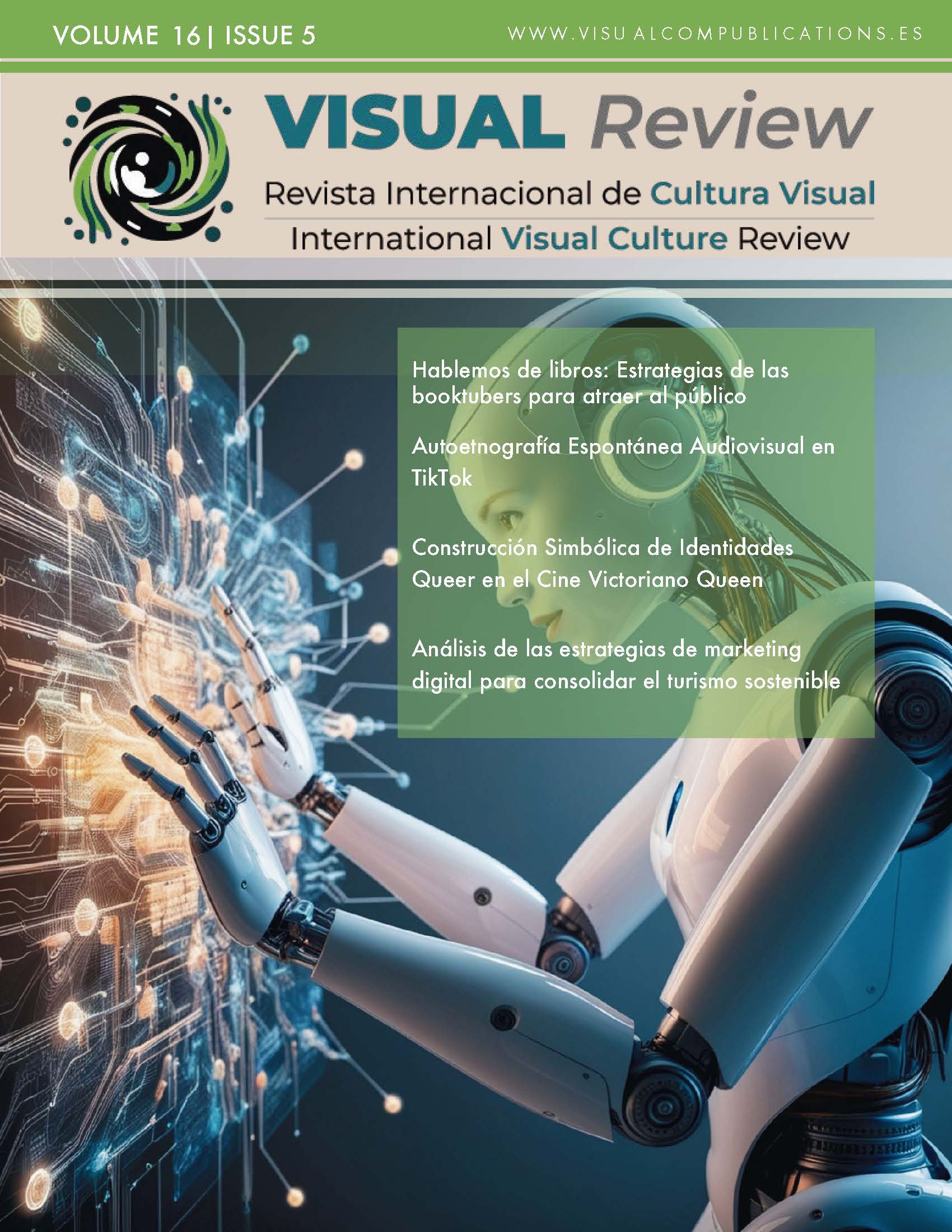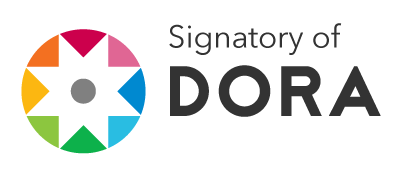Instagram as an Informative and Awareness-raising Medium on Migrant Minors
Good Practices from NGOs in Spain
DOI:
https://doi.org/10.62161/revvisual.v16.5295Keywords:
Minors immigrants, Instagram, Social media, Media representation, NGOsAbstract
NGOs are actively using social networks, specifically Instagram, to disseminate audiovisual content, with a strong emotional reaction, and to achieve effective and participatory communication that contributes to greater awareness and social mobilization. A recurring focus of interest in their campaigns is the situation of migrant minors, a vulnerable group that is frequently omitted and dehumanized. The aim of this work is to identify and highlight good practices from Spanish NGOs, a sensitive border territory and main gateway to Europe, so that they can be replicated in other geographical contexts to promote social change.
Downloads
Global Statistics ℹ️
|
506
Views
|
180
Downloads
|
|
686
Total
|
|
References
Acal Díaz, I. (2015). Metodologías para el análisis de la imagen fija en los documentos publicitarios: Revisión y aplicaciones. Revista General de Información y Documentación, 25(2), 425–446. https://doi.org/10.5209/rev_RGID.2015.v25.n2.51243 DOI: https://doi.org/10.5209/rev_RGID.2015.v25.n2.51243
Armero, R. (2024, 1 de marzo). “Facebook dice que a sus usuarios no les interesan las noticias: anuncia el cierre de Facebook News en EEUU y Australia”. Business Insider. https://bit.ly/3T5iP5i
Bañón Castellón, L. (2023). Televisión y representación de los niños, niñas y adolescentes inmigrantes extranjeros no acompañados: una aproximación a las cadenas españolas. Encuentros. Revista de ciencias humanas, teoría social y pensamiento crítico, 20, 235-248. https://doi.org/10.5281/zenodo.10059665
Casares, A. (2021). La hora del periodismo constructivo. El poder transformador de la información orientada al futuro y a las soluciones. Ediciones Universidad de Navarra (EUNSA). ISBN 978-8431335625
Claro Montes, María Cecilia, Sonia Aránzazu Ferruz-González, y José Catenacci. 2023. «Redes Sociales Y Tercer Sector: Análisis Del Uso De Facebook E Instagram En 50 ONG De España y Chile». Revista Latina De Comunicación Social, 82(diciembre), 1-21. https://doi.org/10.4185/rlcs-2024-2197 DOI: https://doi.org/10.4185/rlcs-2024-2197
Del Vayo, A. (2022, 30 de julio). YouTube redobla su ofensiva contra TikTok permitiendo que cualquier vídeo sea un Short. El Español. https://bit.ly/43hUxK7
De Rosa, A. S., Bocci, E., Nubola, A., & Salvati, M. (2020). The Polarized Social Representations of immigration through the photographic lens of Instagram. Psychology Hub, 37(3), 5–22. https://doi.org/10.13133/2724-2943/17227
García-Avilés, J. A. (2021). Review article: Journalism innovation research, a diverse and flourishing field (2000-2020). Profesional de la información, 30(1). https://doi.org/10.3145/epi.2021.ene.10 DOI: https://doi.org/10.3145/epi.2021.ene.10
Gallego-Pérez, J. I. (2010). Podcasting: Nuevos modelos de distribución para los contenidos sonoros. Universidad Oberta de Catalunya (UOC).
García-Marín, D., & Aparici, R. (2018). Nueva comunicación sonora. Cartografía, gramática y narrativa transmedia del podcasting. Profesional de la información, 27(5), 1071-1081. DOI: https://doi.org/10.3145/epi.2018.sep.11 DOI: https://doi.org/10.3145/epi.2018.sep.11
Gürtler, S. V., Rodríguez-Tablado, M., Weisbrot, M. A., Ruiz-Yanzi, M. V., Kopitowski, K. S., & Terrasa, S. A. (2022). Quantitative and Qualitative Analysis of Argentine Breast Cancer Prevention Campaigns Disseminated By Still Images on Social Networks During October 2019. Revista Peruana de Medicina Experimental y Salud Publica, 39(2), 152–160. https://doi.org/10.17843/rpmesp.2022.392.11019 DOI: https://doi.org/10.17843/rpmesp.2022.392.11019
Hernández Sampieri, R., Fernández Collado, C., & Baptista Lucio, M. del P. (2010). Metodología de la investigación. In McGraw Hill: Vol. 5ta Edicion. https://bit.ly/3vxadcO
IAB Spain (2023). Estudio de Redes Sociales 2023. https://iabspain.es/estudio/estudio-de-redes-sociales-2023/
Jaramillo-Dent, D. & Pérez-Rodríguez, MA (2019) #MigrantCaravan: The border wall and the establishment of otherness on Instagram. New Media & Society, 23, 2019; https://doi.org/10.1177/1461444819894241 DOI: https://doi.org/10.1177/1461444819894241
Jiménez-Iglesias, E., Elorriaga-Illera, A., Monge-Benito, S., y Olabarri-Fernández, E. (2022). Exposición de menores en Instagram: instamadres, presencia de marcas y vacío legal. Revista Mediterránea de Comunicación, 13(1), 51-63. https://doi.org/10.14198/MEDCOM.20767 DOI: https://doi.org/10.14198/MEDCOM.20767
Krippendorff, K. (2004). Content analysis: An introduction to its methodology. Sage Publications, INC.
Kutscher, N. & Kreß, L.M. (2018). The Ambivalent Potentials of Social Media Use by Unaccompanied Minor Refugees. Social Media + Society, 4 (1). https://doi.org/10.1177/2056305118764438 DOI: https://doi.org/10.1177/2056305118764438
Lascuráin, J. (2024). Nuevo libro del estilo urgente. Agencia EFE. Instituto Cervantes y Agencia Efe. https://recursos.efe.com/objetos_app/libroestilo/libroDelEstiloUrgente.pdf
Martin-Neira, J.-I., Trillo-Domínguez, M., & Olvera-Lobo, M.-D. (2023). Ibero-American journalism in the face of scientific disinformation: Fact-checkers’ initiatives on the social network Instagram. Profesional de la información, 32(5), e320503. https://doi.org/10.3145/epi.2023.sep.03 DOI: https://doi.org/10.3145/epi.2023.sep.03
Martínez-Costa, M.P., Moreno, E., & Amoedo, A. (2018). Mapa de la radio online en España: tipología y caracterización en el contexto de los cibermedios. Profesional de la información, 27(4), 849–857. https://doi.org/10.3145/epi.2018.jul.14 DOI: https://doi.org/10.3145/epi.2018.jul.14
Martínez-Rolán, X., Oksana, T., Piñero-Otero, T. & Renó, D. (2019). Instagram como red de promoción e hipermediación del turismo rural: el caso de Aldeias Históricas. Revista Latina de Comunicación Social, 74, 1610-32. https://doi.org/10.4185/RLCS-2019-1401 DOI: https://doi.org/10.4185/RLCS-2019-1401
Mejía Navarrete, J. (2000). El muestreo en la investigación cualitativa. Investigaciones Sociales, 4(5), 165–180. https://doi.org/10.15381/is.v4i5.6851 DOI: https://doi.org/10.15381/is.v4i5.6851
Moreno-Ortiz, A. (2000). Diseño e implementación de un lexicón computacional para lexicografía y traducción automática. Estudios de Lingüística del Español. http://elies.rediris.es/elies.html
Newman, N. (2018). The Future of Voice and the Implications for News. Reuters Institute for the Study of Journalism. https://reutersinstitute.politics.ox.ac.uk/our-research/future-voice-and-implications-news
Paris, J. A. (2021). Emociones, marketing y comunicación. Nobuko.
Planas Bou, C. (2024, 1 de marzo). “Facebook dejará de pagar a los medios de comunicación por enlazar sus noticias”. El Periódico. https://bit.ly/4aaldyC
Reuters Institute (2023). Digital News Report 2023. https://reutersinstitute.politics.ox.ac.uk/digital-news-report/2023
Sendín Gutiérrez, J. C. & Izquierdo Iranzo, P. (2008). Guía práctica para los profesionales de los medios de comunicación: tratamiento mediático de la inmigración. Observatorio Español del Racismo y la Xenofobia (Oberaxe). Ministerio de Inclusión, Seguridad Social y Migraciones. https://www.inclusion.gob.es/oberaxe/es/publicaciones/documentos/documento_0066.htm
Shapiro, I. (2014) The Future of Journalism: developments and debates, Digital Journalism, 2(4), 619-621. https://doi.org/10.1080/21670811.2014.895499 DOI: https://doi.org/10.1080/21670811.2014.895499
Statista (2024). Most popular social networks worldwide as of January 2024. https://www.statista.com/statistics/272014/global-social-networks-ranked-by-number-of-users/
Toff, B., Palmer, R. & Nielsen, R. K. (2024). Avoiding the News: reluctant audiences for Journalism. Columbia University Press. ISBN 9780231205191 DOI: https://doi.org/10.7312/toff20518
Downloads
Published
How to Cite
Issue
Section
License
Copyright (c) 2024 VISUAL REVIEW. International Visual Culture Review / Revista Internacional de Cultura Visual

This work is licensed under a Creative Commons Attribution-NoDerivatives 4.0 International License.
Those authors who publish in this journal accept the following terms:
-
Authors retain copyright.
-
Authors transfer to the journal the right of first publication. The journal also owns the publishing rights.
-
All published contents are governed by an Attribution-NoDerivatives 4.0 International License.
Access the informative version and legal text of the license. By virtue of this, third parties are allowed to use what is published as long as they mention the authorship of the work and the first publication in this journal. If you transform the material, you may not distribute the modified work. -
Authors may make other independent and additional contractual arrangements for non-exclusive distribution of the version of the article published in this journal (e.g., inclusion in an institutional repository or publication in a book) as long as they clearly indicate that the work was first published in this journal.
- Authors are allowed and recommended to publish their work on the Internet (for example on institutional and personal websites), following the publication of, and referencing the journal, as this could lead to constructive exchanges and a more extensive and quick circulation of published works (see The Effect of Open Access).













